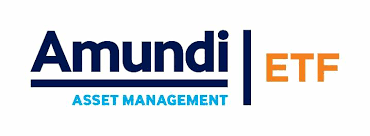
In both the US and Europe, headline inflation - inflation that includes fuel and food prices - continues to decline. Core inflation - which excludes fuel and food prices - though, is proving stubbornly sticky, currently standing at 4.3% in the US and 4.5% in Europe.[1] And with central banks resolute in a quest to bring core inflation down to their two percent targets, the fight is clearly not yet over. As such, rates are likely to stay at an elevated level for longer and the possibility of further rate hikes persists.
Bond investors may understandably be concerned about the possible impact on their portfolios. Rising interest rates can potentially have a detrimental effect on fixed income portfolios, at least in the short term, by adding to downside risks for bond prices, particularly those of longer-dated bonds, which bear a higher sensitivity to changes in interest-rate levels.
In this uncertain environment, managing duration - a key indicator of a bond's sensitivity to interest rates - is key. To this end, shorter duration strategies (investing in bonds with a short maturity) may help mitigate volatility and reduce interest-rate risk in a fixed income allocation. In current market conditions, they also offer the potential for attractive yields.
Attractive yields for short duration in a volatile market
Stability and income are key factors to consider for investors who hold government bonds for diversification purposes and US treasuries and European government bonds currently present potentially attractive and steady yield opportunities, following an extended period of low interest rates.
In particular, short-dated treasuries in the US and short-dated government bonds in Europe currently offer high coupon levels with minimal volatility risk. For example, 2-year government bond yields are currently standing around 3.2% in Europe (German Bund) and 5.0% in the US (Treasuries) - their highest level in over a decade.
Short-dated bonds bring stable income stream
Yield vs 1Y volatility- USD Fixed Income indices (in %)
Sources: Bloomberg, Amundi. Data as at 02/10/2023.
The yield is a yield to worst. Past performance is not a reliable indicator of future performance.
Yield vs 1Y volatility - USD Fixed Income indices (in %)
Sources: Bloomberg, Amundi. Data as at 02/10/2023.
The yield is a yield to worst. Past performance is not a reliable indicator of future performance.
Within the credit landscape, higher-quality investment-grade debt is also currently looking attractive, offering the potential to generate stable cash flows. In particular, European shorter-duration investment-grade bonds. With the ECB's reluctance to give up on its fight against inflation, a lack of visibility on the future path of rates, but a strong likelihood that they will remain elevated for longer, these are far less exposed to interest-rate risk compared to their longer maturity counterparts.
Looking ahead, the transition towards higher funding costs is likely to be faster and more painful for high-yield-rated corporates, which have less ability to generate cash flows and higher short-term refinancing needs. In our view, high-yield valuations are tight and not consistent with the prospects of lower growth in the period ahead.
In the current, uncertain environment, where rates are likely to stay higher-for-longer, managing duration is critical to reducing risk, and it may also be a source of performance. Shorter duration strategies can help protect portfolios against rising rates and may also provide attractive income opportunities.
Amundi ETF offers a comprehensive €7 billion AUM[2] range of short-term fixed income ETFs, covering government and corporate bonds with different levels of maturities: from daily solutions with zero duration, 0 to 6 months, and up to three years' maturity investments, catering to different aims and risk levels.
For more information, visit https://www.amundietf.co.uk/en/professional/etf-strategies/fixed-income-etfs.
[1] Source: Bloomberg, September 2023
[2] Source: Amundi, as at September 2023
INVESTMENT RISKS
KNOWING YOUR RISK
It is important for potential investors to evaluate the risks described below and in the fund's Key Investor Information Document ("KID") and prospectus available on our website www.amundietf.com.
CAPITAL AT RISK - ETFs are tracking instruments. Their risk profile is similar to a direct investment in the underlying index. Investors' capital is fully at risk and investors may not get back the amount originally invested.
UNDERLYING RISK - The underlying index of an ETF may be complex and volatile. For example, ETFs exposed to Emerging Markets carry a greater risk of potential loss than investment in Developed Markets as they are exposed to a wide range of unpredictable Emerging Market risks.
REPLICATION RISK - The fund's objectives might not be reached due to unexpected events on the underlying markets which will impact the index calculation and the efficient fund replication.
COUNTERPARTY RISK - Investors are exposed to risks resulting from the use of an OTC swap (over-the-counter) or securities lending with the respective counterparty(-ies). Counterparty(-ies) are credit institution(s) whose name(s) can be found on the fund's website amundietf.com. In line with the UCITS guidelines, the exposure to the counterparty cannot exceed 10% of the total assets of the fund.
CURRENCY RISK - An ETF may be exposed to currency risk if the ETF is denominated in a currency different to that of the underlying index securities it is tracking. This means that exchange rate fluctuations could have a negative or positive effect on returns.
LIQUIDITY RISK - There is a risk associated with the markets to which the ETF is exposed. The price and the value of investments are linked to the liquidity risk of the underlying index components. Investments can go up or down. In addition, on the secondary market liquidity is provided by registered market makers on the respective stock exchange where the ETF is listed. On exchange, liquidity may be limited as a result of a suspension in the underlying market represented by the underlying index tracked by the ETF; a failure in the systems of one of the relevant stock exchanges, or other market-maker systems; or an abnormal trading situation or event.
VOLATILITY RISK - The ETF is exposed to changes in the volatility patterns of the underlying index relevant markets. The ETF value can change rapidly and unpredictably, and potentially move in a large magnitude, up or down.
CONCENTRATION RISK - Thematic ETFs select stocks or bonds for their portfolio from the original benchmark index. Where selection rules are extensive, it can lead to a more concentrated portfolio where risk is spread over fewer stocks than the original benchmark.
IMPORTANT INFORMATION
Marketing Communication. For Professional Clients only. In the United Kingdom (the "UK"), this advertorial is being issued by Amundi (UK) Limited ("Amundi UK"), 77 Coleman Street, London EC2R 5BJ, UK. Amundi UK is authorised and regulated by the Financial Conduct Authority ("FCA") and entered on the FCA's Financial Services Register under number 114503. This may be checked at https://register.fca.org.uk/ and further information of its authorisation is available on request.
This advertorial is only directed at persons who are Professional Clients (as defined in the FCA's Handbook of Rules and Guidance), must not be distributed to the public and must not be relied or acted upon by any other persons for any purposes whatsoever. Amundi UK, and/or any of its affiliates ("Amundi") accepts no liability whatsoever, whether direct or indirect, that may arise from the use of information contained in this material. The contents of this advertorial is for informational purposes only and does not constitute an offer, a solicitation, investment advice or an investment recommendation to buy or sell. Amundi does not give any guarantee (whether express or implied), warranty, undertaking or representation as to the accuracy, validity, relevance, exhaustiveness, timeliness, completeness and/or reliability of the information contained herein. This material is based on sources that Amundi considers to be reliable at the time of publication. Data, opinions and analysis may be changed without notice. Reproduction is prohibited without the written consent of Amundi. Past performance is not a guarantee or indication of future results.
This advertorial is not intended for citizens or residents of the United States of America or to any «U.S. Person», as this term is defined in SEC Regulation S under the U.S. Securities Act of 1933. The US person definition is indicated in the legal mentions section on amundi.com, or amundietf.com.
This advertorial is solely for the attention of professional and eligible counterparties as defined in Directive MIF 2014/65/UE of the European Parliament acting solely and exclusively on their own account, or Institutions, and acting exclusively on their own account. In Switzerland, it is solely for the attention of qualified investors within the meaning of Article 10 paragraph 3 a), b), c) and d) of the Federal Act on Collective Investment Scheme of June 23, 2006.
It is the investor's responsibility to make sure his/her investment is in compliance with the applicable laws she/he depends on, and to check if the investment matches his/her investment objective with his/her patrimonial situation (including tax aspects).















